by Lisa Cooke | Jan 25, 2017 | 01 What's New, Adoption, Book Club |
Genealogy for adoptees can be a difficult journey. A train ticket from 1856 and one of our most popular Genealogy Gems Book Club titles helped one woman solve an adoption family mystery. Here’s her story.

Ben Brooksbank [CC BY-SA 2.0 (http://creativecommons.org/licenses/by-sa/2.0)], via Wikimedia Commons
Adoption Mystery: Solved
I recently read an article that I just had to share! Julia Park Tracey’s two-times great grandfather, William Lozier, was adopted. She wanted to trace his family history. Her only clue was the receipt for a train fare from New York’s Home for the Friendless to Oberlin, Ohio that William had. The ticket cost $7.50 and was dated 1856.
With a little bit of easy math, Julia realized that William would have been a three-year old at the time. Can you imagine? Julia was intrigued by the finding, but didn’t think much more about it until she read Orphan Train by Christina Baker Kline. This piqued her curiosity about Williams’s story and she started researching. What she found was an astonishing story of family struggling to stay together during the hardships of 19th century life.
Along her research journey, Julia learned that William’s mother was widowed in upstate New York in 1848. Consequently, the woman lost the family farm and needed to give up her two oldest boys to an orphanage. She managed to hold on to her oldest daughter and baby William while she worked as a seamstress. Sadly, she still couldn’t make ends meet and ended up placing her last two children in an orphanage as well.
Julia explains in the article: “Martha was undaunted; she worked and saved, and eventually wrote to ask for her children back. The orphanage did not respond. In those days, a child’s moral and spiritual welfare were tantamount, and a single mother was seen as not fit to parent. Nevertheless, she found her way to her daughter, and at least one of her middle sons, if not both. Martha lived the rest of her life with her married daughter and her grandchildren. She died between 1900 and 1910, [but] she never saw nor heard of what had happened to Will.”
With these new pieces of information, Julia was able to trace the line back through time and generations. She even learned a little more about her unexpected DNA results! I am sure it was very satisfying to finally piece together the story of the old train ticket and William’s family story. Even the smallest clues like the old train ticket can lead to long-forgotten stories that add to our family history tapestry. Genealogy is all about persistence, and much like a detective, the smallest piece of evidence can make all the difference!
More on Genealogy for Adoptees
 If you’ve been a Premium member for a while, you’ll recall Orphan Train by Christina Baker Kline. It was one of our first Genealogy Gems Book Club selections—and based on feedback from you, it’s been one of our most popular choices. If you haven’t listened to Premium episode 121 which includes our interview with Christina, I encourage you to go back and listen. In that conversation, you’ll learn about the history of the orphan train riders in the U.S. and Canada and how the author researched it.
If you’ve been a Premium member for a while, you’ll recall Orphan Train by Christina Baker Kline. It was one of our first Genealogy Gems Book Club selections—and based on feedback from you, it’s been one of our most popular choices. If you haven’t listened to Premium episode 121 which includes our interview with Christina, I encourage you to go back and listen. In that conversation, you’ll learn about the history of the orphan train riders in the U.S. and Canada and how the author researched it.
Learn more about the Orphan Train and it’s riders in this post: “Road Trip Anyone? An Orphan Train Museum.”
See what else we’ve read by clicking: Genealogy Gems Book Club
by Lisa Cooke | Sep 24, 2013 | 01 What's New, History, Inspiration, Maps
If your ancestors lived or worked in New York City, did you know you can follow them home from work? At least virtually.
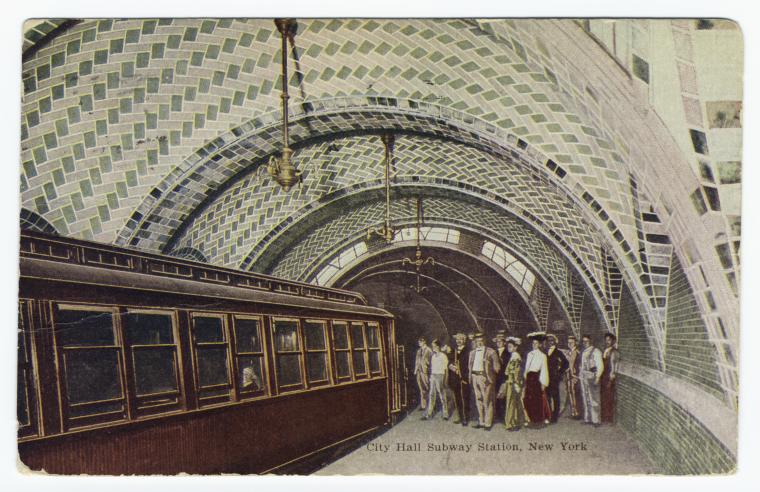
New York City Subway History
David Pirmann runs a website dedicated to the history of the New York City subway system. NYCSubway.org includes great historical background, photos, maps and other documents.
Start by reading about elevated rail service that began in the 1860s and the development of the transit system since then. Then consult route maps for several time periods, either in the Historical Maps section or the Line by Line Guide (both under the Maps and Stations tab).
The fun part is browsing the rest of the site: learn how “The Great White Hurricane” snowstorm of 1888 paralyzed the city, or how things have worked behind the scenes (fares, power, signals, etc). You can even check out images of abandoned stations and old cars.
Thanks to Gizmodo.com for an article that pointed me to this fun resource.
by Lisa Cooke | Jul 15, 2017 | 01 What's New, Societies
The FGS Webinar Series on Society Management has just been announced and it’s starting soon. This new free webinar series is focused on the leadership and management of non-profit societies. If you belong to a genealogical society you’ll want to let your leadership know about this opportunity from the The Federation of Genealogical Societies. Read on for more from FGS.
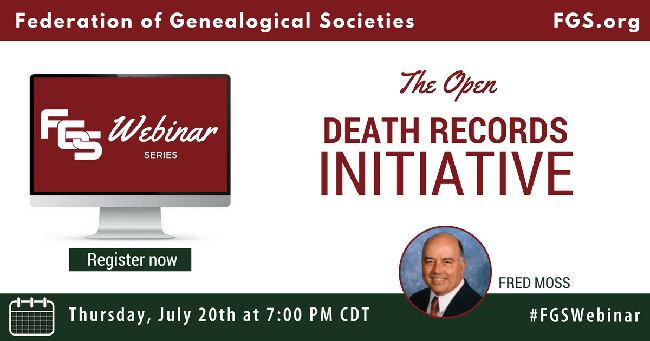
FGS Webinar Series Details
Press Release: July 12, 2017 – Austin, TX.
The Federation of Genealogical Societies (FGS) announces the launch of their Society Management webinar series, scheduled to begin July 20, 2017. This series of free events will bring a much-needed aspect to the array of learning opportunities currently provided in the genealogical community, focusing solely on the leadership and management of non-profit societies.
The series will begin July 20, 2017 at 7:00pm central with a presentation by Fred Moss discussing The Open Death Records Initiative. The August session will feature David Rencher, CG, presenting on the best practices – and challenges – surrounding The Nominating Committee.
Each month thereafter will feature a new and interesting topic, ranging from recruitment and volunteer management to technology, publications, and working with your local tourism board. Registration will be necessary, and regular updates will be shared via the FGS Voice blog, FGS Voice Newsletter, and social media. Webinars will occur every 3rd Thursday of the month.
Registration for the July program can be found here.
Speakers interested in presenting topics should contact Jen Baldwin, Education Chair, at education@fgs.org.
More Support for Genealogical Societies
 Finding affordable quality programming is probably one of the biggest challenges genealogy societies face.
Finding affordable quality programming is probably one of the biggest challenges genealogy societies face.
Genealogy Gems for Societies is an annual premium subscription service just for genealogical societies and groups* (such as libraries). This is a cost-effective way for your group to provide quality family history video presentations by internationally-renowned speaker Lisa Louise Cooke at your regular meetings.
With a society subscription, your group may show video recordings of Lisa’s most popular classes! This applies to group presentations for a single location, one video per event–but with more than a dozen 50-60 minute videos, several more 25-30 minute videos and a growing number of quick video tips (4-15 minutes), you’ll have plenty of video classes to show all year long! Click here to see a full list of videos available to societies. (Videos are not for individual use by society members.)
In addition, society subscribers receive:
- Permission to republish articles from our extensive article archive in your society newsletter (your editor will LOVE this feature!)
- 10% discount for your society on live seminars by Lisa Louise Cooke
- 10% discount code for your society members to use in the Genealogy Gems Store (details will be sent to your society membership email address after purchase)
- BONUS: exclusive digital PDF ebook of a collection of Lisa’s most popular articles from Family Tree Magazine! Share this in the members-only section of your group’s website (or if you don’t have a members-only section, your Programming Director may keep it and enjoy).
All of this costs only $199.00 a year—about the cost of one typical webinar! Click here for more details and ordering information.
Please support your local genealogical society or group by sharing this post with them by email or social media. Thank you! You’re a Gem.
by Lisa Cooke | Jul 3, 2017 | 01 What's New, Interviewing
Is lack of time or lack of cooperation getting in the way of you capturing memories? Your descendants are depending on you to pass down the family’s history. Genealogy Gems readers and listeners share their creative solutions to the age old challenge of capturing the future’s history today!
Recently I wrote a post called
Remembering Dad with a Family History Interview Video. In that post I shared the video I made of my husband Bill’s interview about his father. I’ve been delighted to hear from so many of you Genealogy Gems readers about your own interview strategies for gleaning stories and memories from loved ones.
Sharon C. wrote to explain her creative approach to interviewing her mom:
As my mother grew older (she lived to be almost 94), her vision got very bad. So, I bought her a large screen T.V. Then, I attached my video camera to the T.V. and a microphone to her from my camera, and we went through her old photo albums, with my camera on the photos, but the photos projected to her on the large screen T.V. We then talked about the photos and I asked her questions about the people, but she saw the picture on her T.V. Her narrative and the pictures were recorded on my video. Voila!!! her pictures, her voice, her details, on the camera and she didn’t even realize that it was being recorded. She thought she was just discussing the pictures from the album. At one point, her two brothers were present and I was able to get their input as well, at the same time.
Patricia D. shares how she captures her husband’s stories without having to find time to do it in their busy schedule:
 Lisa, I enjoyed your article about trying to interview your husband, who is shy about being interviewed. My husband and I found a painless way to do an interview. When we are traveling he gets sleepy if no one is talking to him, so I decided interviewing him in an informal way about events in his life would serve two purposes. He wouldn’t get sleepy, and I would get information about his life story.
Lisa, I enjoyed your article about trying to interview your husband, who is shy about being interviewed. My husband and I found a painless way to do an interview. When we are traveling he gets sleepy if no one is talking to him, so I decided interviewing him in an informal way about events in his life would serve two purposes. He wouldn’t get sleepy, and I would get information about his life story.
I take my iPad when we’re traveling and as I ask him questions I type his responses into Pages (app). Usually one question leads to another, so we seldom run out of information. He enjoys reminiscing about the past, and I enjoy hearing it, since he seldom mentions it without being prodded.
When we get home I polish up what I have written and transfer it to my computer. I store it in a folder labeled ‘Don’s life.’ Eventually we will have enough to write the story of his life, with lots of pictures. And it’s completely painless.
This is a wonderful, creative way to capture stories and spend time with family!
Curt S. is not only capturing his stories for his family, but he’s also brightening the lives of others:
 Hi Lisa, I love the story about a lady interviewing her husband while driving to keep him awake and to share his life stories. I too came up with a neat way to share my life story. Every year at Christmas time when my family gathers together I seem to always be asked to tell one of my stories, as I have a lot of stories, mostly very funny stories. Even at my former work my boss and co-workers would ask me to tell certain stories again.
Hi Lisa, I love the story about a lady interviewing her husband while driving to keep him awake and to share his life stories. I too came up with a neat way to share my life story. Every year at Christmas time when my family gathers together I seem to always be asked to tell one of my stories, as I have a lot of stories, mostly very funny stories. Even at my former work my boss and co-workers would ask me to tell certain stories again.
So, it dawned on me that I needed to find a way to tell these stories so that I could leave a legacy to my kids and their descendants. We are always suggesting to others that they interview their living ancestors while they have the chance. So why not tell your own story.
To motivate myself to tell my stories, I created a blog, in which I tell one of my stories approx, once every other week. Then after I publish the blog story, I copy and paste into my Legacy 9 software, into the story feature, which then puts the story in chronological order that later can be published in a book format.
So here is the address to my blog. If you go there you will see the kind of stories I am telling. I have identified over two years worth of stories so far that I can share on my blog.
When it comes to family history, there is definitely an element of methodology – but that doesn’t mean there can’t also be creativity! Everyone’s family is different, and what works for some may not work for others. So don’t be afraid to put your own spin on research ideas, and customize them to work for you. Thank you to everyone who submitted their strategies, and I hope you’ve got at least one new idea to try out!
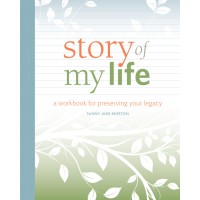
Family History Writing Resource
The Story of My Life workbook, written by our very own Sunny Morton, makes it easy to record your memories, and the memories of your loved ones. Simply follow the prompts to preserve memories from your entire life.
by Lisa Cooke | Oct 25, 2017 | 01 What's New, Archive Lady |
What we expect to be found in an archive is documents, photos, memorabilia and other paper-based items. But the Archive Lady Melissa Barker’s list of “most unusual discoveries” reminds us to expect the unexpected in archival collections! Read about her top ten unique and exciting archive discoveries.
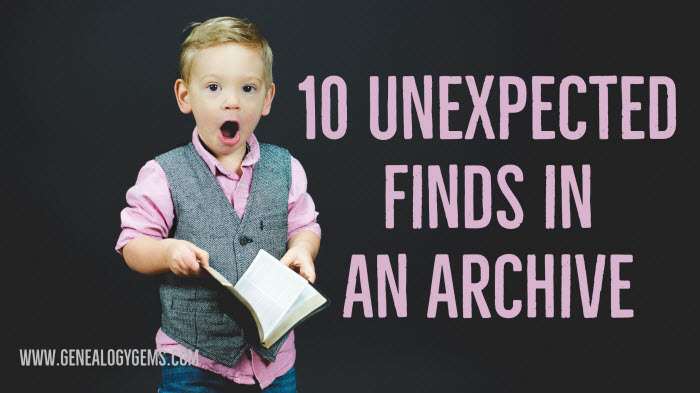
10 Unexpected Items I’ve Found in an Archive
Working in an archive everyday like I do in the Houston County, Tennessee Archives, you can come across some of the most interesting items! Here is a list of my top 10 discoveries.
1. Looney Money
This is money that was dispensed by a local business to their employees for wages. This money usually had the store or business name on it and the money could only be spent in the store or business.
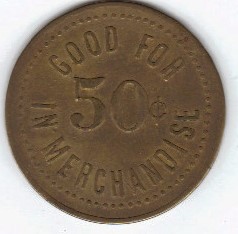
All images in this post courtesy of Melissa Barker and Houston County, TN Archives, except as noted.
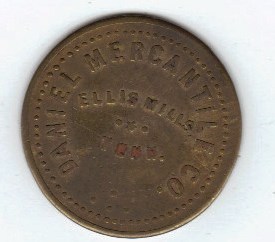
2. Straight Razor
While working on circuit court case packets, I ran across one for William Hughes who was charged with going armed with a straight razor in 1952. The actual straight razor was in the packet and just as sharp as it was back in 1952.
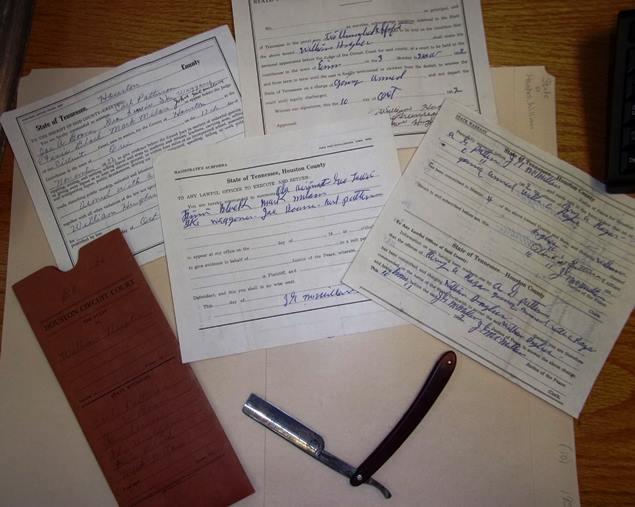
3. Fudge Pie Recipe (with a Voting Roster?!)
While processing a collection of voting and election records, I found a 1952 local city ballot that had a handwritten fudge pie recipe written on the back. I actually made the pie and it was wonderful!
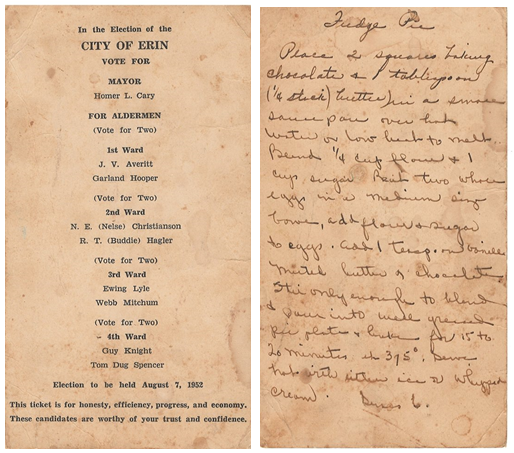
4. Lock of Hair
While processing a manuscript collection of various types of records, I found a lock of hair tied with a blue ribbon that was in perfect condition. The lock of hair was in a harmonica box and addressed to a gentleman and had been sent through the mail. So far we have not been able to determine whose lock of hair it is.
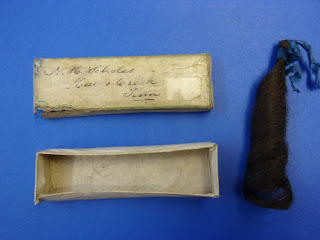
5. A 100-Year Old Vacuum Cleaner
Recently a man walked into the archives and donated a 100 year old vacuum cleaner. This vacuum cleaner is motorless and looks just like the Bissell vacuum cleaners you can buy today. The crazy thing is, it still works!
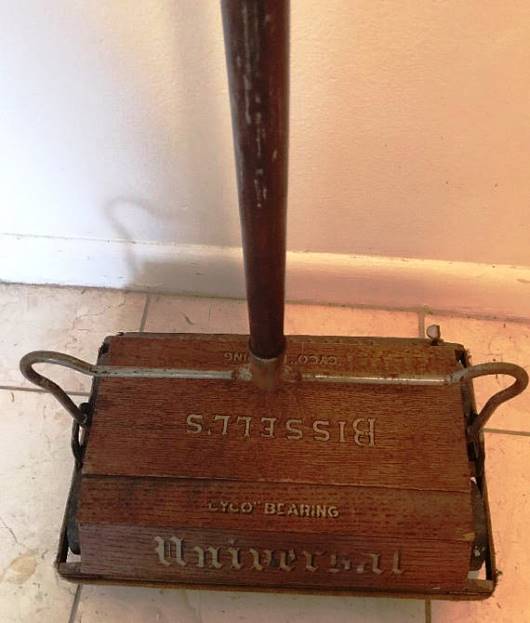
6. Snake Photo
Recently a patron donated an old photo album that had belonged to her Grandmother who had owned the local hotel back in the 1920s. The photo album included a photo of a lady holding a very, very large snake. There is a name of “Mille Viola” on the photo and it was taken at Kern Bros. Photographs in New York.

7. Moonshine
In the archives, we have come across a couple of examples of the moonshine trade. In our court records, there are numerous court cases about moonshiners. We also have several photographs of bottles of moonshine and stills. Seems it was very popular to take photographs of what the police had collected.
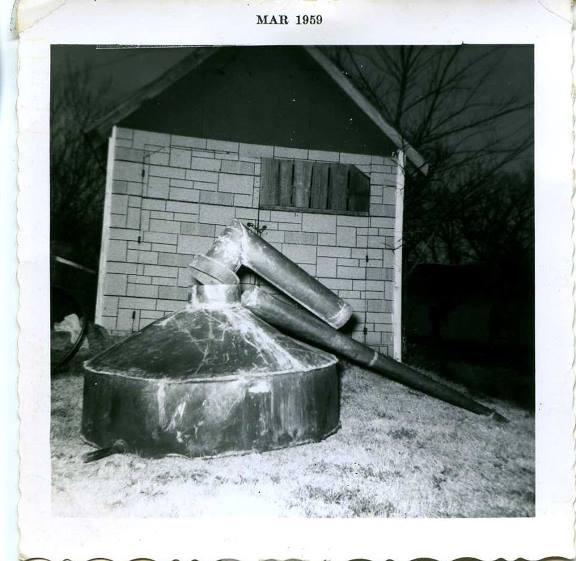
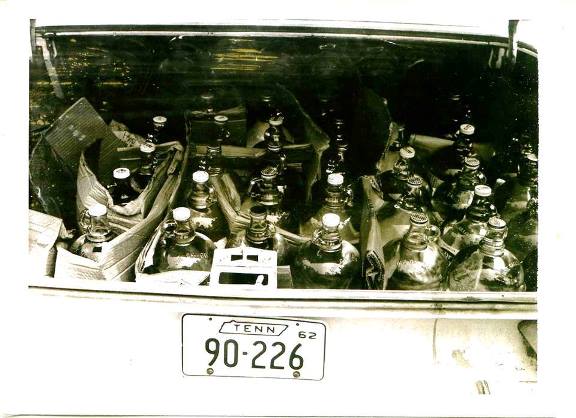
8. Grand Ole Opry
In one of the wonderful scrapbooks that we have at the Houston County, TN. Archives, there is an original 1943 Grand Ole Opry Ticket.
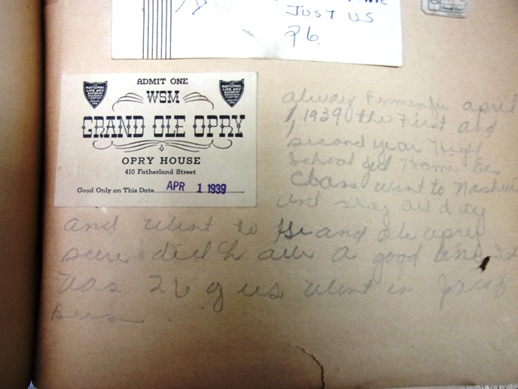
KODAK Digital Still Camera
9. Railroad Memorabilia
The railroad once went through many communities and areas including Houston County, TN. We have many items to help us remember the railroad, like railroad spikes, lanterns, and tools used to work on the railroad.
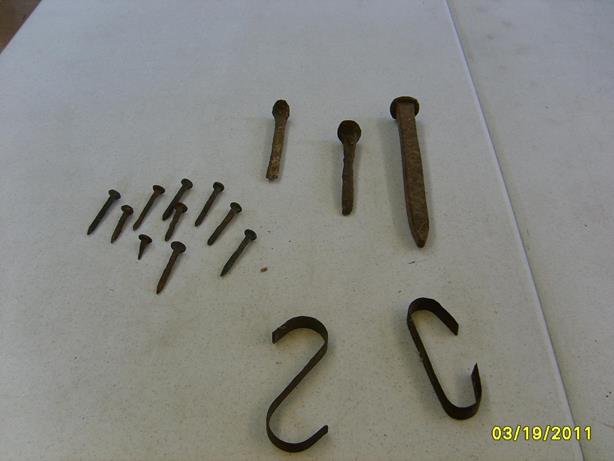
10. Dioramas
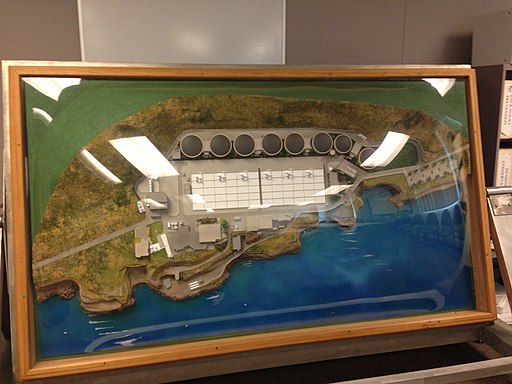
By Tracyleanne (Own work) [CC BY-SA 3.0 (https://creativecommons.org/licenses/by-sa/3.0)], via Wikimedia Commons. Click to view.
Melissa doesn’t have images of her dioramas–and every diorama is different–but here’s an example of a diorama of a wastewater treatment plant. (People create dioramas of diverse places, don’t they?)
What Have You Found in An Archive?
What treasures or unusual have you discovered in an archival collection? Tell us in the comments below!

 If you’ve been a Premium member for a while, you’ll recall Orphan Train by Christina Baker Kline. It was one of our first Genealogy Gems Book Club selections—and based on feedback from you, it’s been one of our most popular choices. If you haven’t listened to Premium episode 121 which includes our interview with Christina, I encourage you to go back and listen. In that conversation, you’ll learn about the history of the orphan train riders in the U.S. and Canada and how the author researched it.
If you’ve been a Premium member for a while, you’ll recall Orphan Train by Christina Baker Kline. It was one of our first Genealogy Gems Book Club selections—and based on feedback from you, it’s been one of our most popular choices. If you haven’t listened to Premium episode 121 which includes our interview with Christina, I encourage you to go back and listen. In that conversation, you’ll learn about the history of the orphan train riders in the U.S. and Canada and how the author researched it.




 Lisa, I enjoyed your article about trying to interview your husband, who is shy about being interviewed. My husband and I found a painless way to do an interview. When we are traveling he gets sleepy if no one is talking to him, so I decided interviewing him in an informal way about events in his life would serve two purposes. He wouldn’t get sleepy, and I would get information about his life story.
Lisa, I enjoyed your article about trying to interview your husband, who is shy about being interviewed. My husband and I found a painless way to do an interview. When we are traveling he gets sleepy if no one is talking to him, so I decided interviewing him in an informal way about events in his life would serve two purposes. He wouldn’t get sleepy, and I would get information about his life story. Hi Lisa, I love the story about a lady interviewing her husband while driving to keep him awake and to share his life stories. I too came up with a neat way to share my life story. Every year at Christmas time when my family gathers together I seem to always be asked to tell one of my stories, as I have a lot of stories, mostly very funny stories. Even at my former work my boss and co-workers would ask me to tell certain stories again.
Hi Lisa, I love the story about a lady interviewing her husband while driving to keep him awake and to share his life stories. I too came up with a neat way to share my life story. Every year at Christmas time when my family gathers together I seem to always be asked to tell one of my stories, as I have a lot of stories, mostly very funny stories. Even at my former work my boss and co-workers would ask me to tell certain stories again.












